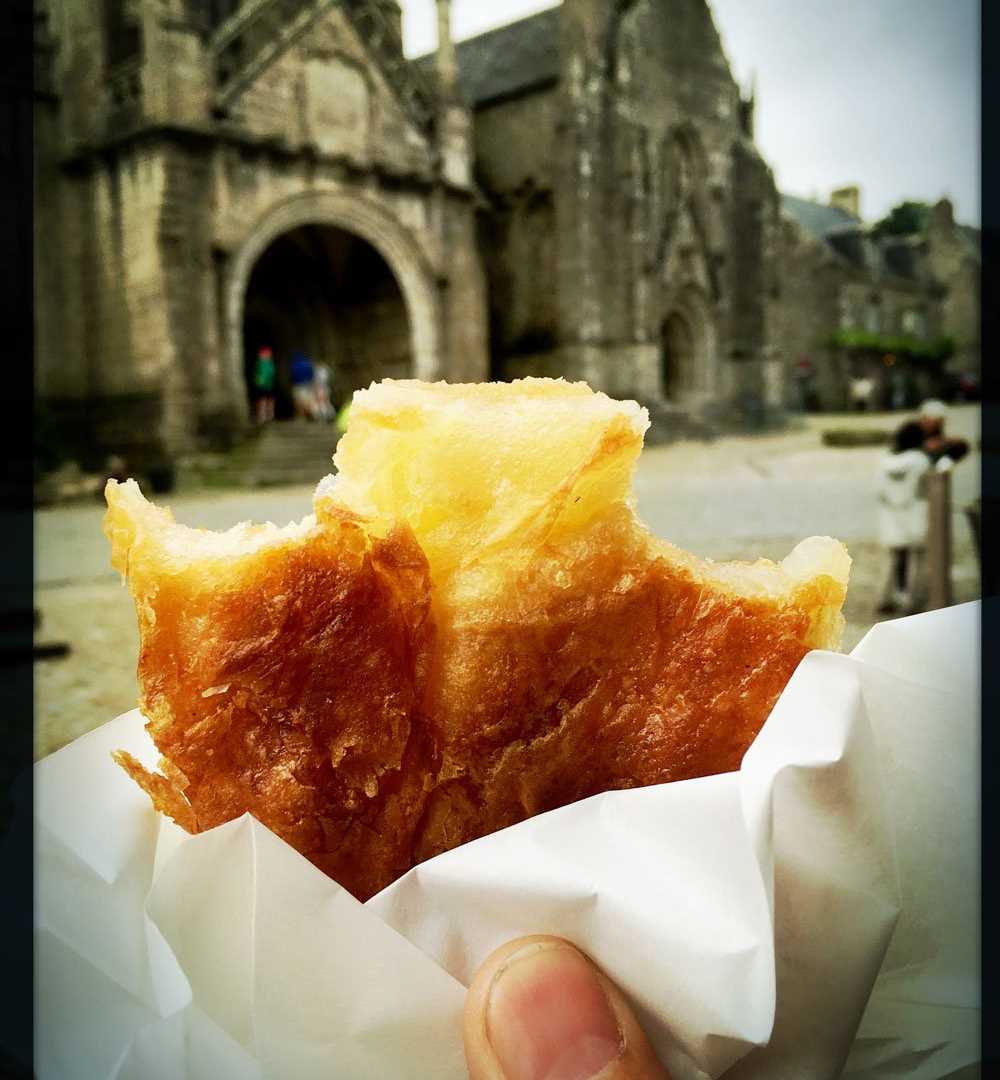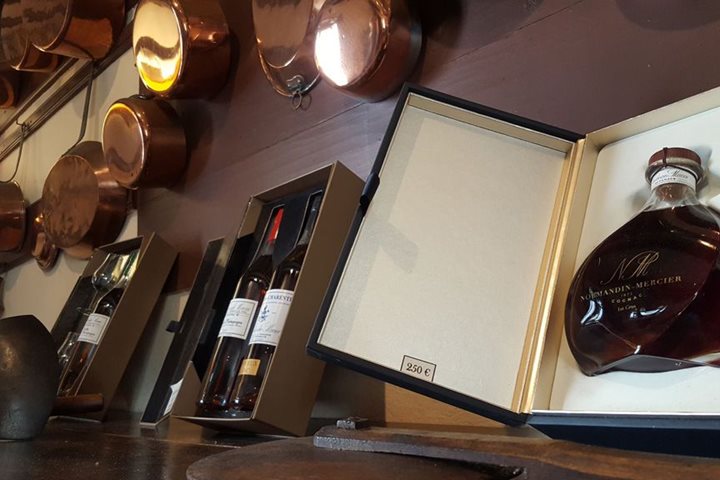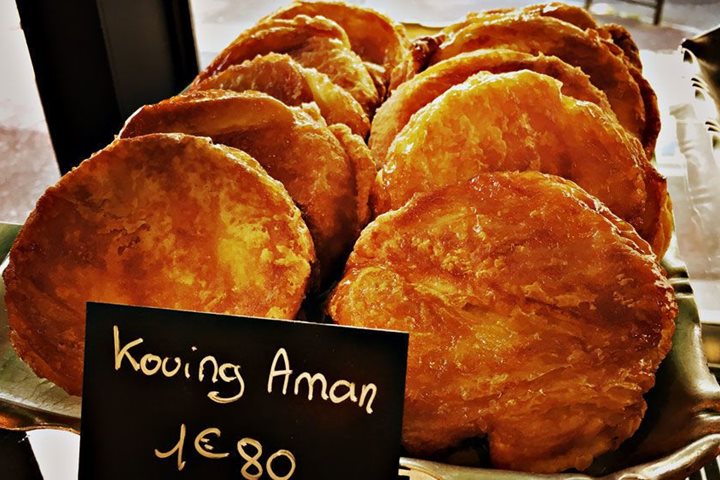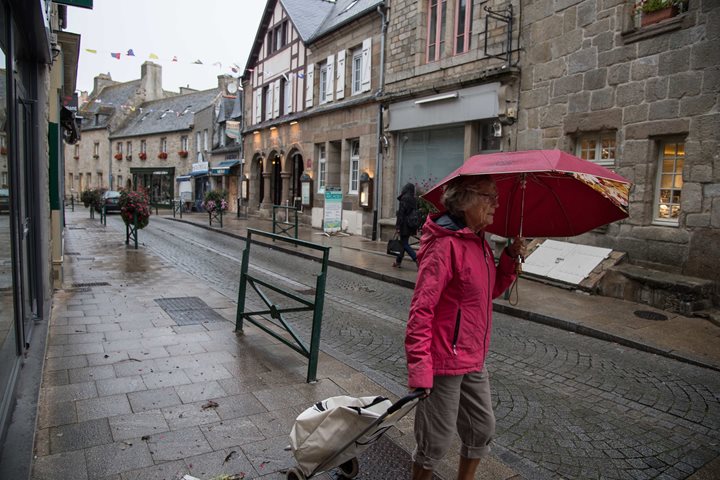It was on June 1, 2016, at approximately 10:45 a.m. while standing in the shadows of the 15th century church in Locronan, France, that I had what I would call a religious experience. The revelation was inspired by the Holy Trinity: flour, sugar and butter. As I bit into the crispy layers of a Kouign-amann, a traditional Breton pastry, I thought to myself: "This may be the greatest thing I have ever eaten in my entire life." And trust me, I have eaten many, many things in my 46 years here on Earth. While most of our guests could barely manage to finish even one of these heavenly delights, I quickly devoured two of them, and, just between you and me, I have two more hiding in my backpack right now waiting for another miracle moment.
It’s not just the sweet treats that have endeared me to Brittany. The landscape, the architecture, the culture, the people and of course, the music, have been so revelatory that I can't believe it has taken me this long to get here. It certainly won't be that long before I come here again, to spend more time exploring this endearing corner of France.
As I strolled through the streets of Locronan, a lovingly preserved medieval village that looks like a set from Game of Thrones (in fact, it turns out many movies and TV shows have been filmed here, notably Roman Polanski's Tess) the sound of bagpipes wafted through the air. While this might send most normal people fleeing in the other direction, this ethnomusicologist followed the melodies to their source, two portly gentlemen in traditional Breton costumes playing Scottish-style bagpipes. As they explained, Brittany is home to two indigenous bagpipes, the veuze, which is similar in size to the Scottish bagpipe, and the biniou kozh a smaller bagpipe typically played in accompaniment with a bombard, a double reed instrument somewhat like a shrill oboe. The bagpipers I met in the streets of Locronan were playing the binioù bras (literally the "big binioù"), the Scottish Highlands bagpipe that was first brought to Brittany in the late 1800s and became popular in starting in the 1930s as part of the large, martial bagpipe, drum and bombard bands known as a bagad.
It wasn't the only music I was to hear in Locronan on this day. Just a few minutes later our group assembled in a nearby hall for a demonstration of traditional Breton music, dance and costumes by members of Confédération War’l Leur, one of the most important organizations dedicated to preserving the unique music, dance and wardrobe of Brittany. They put together a special presentation featuring almost twenty dancers and musicians dressed in elaborately reconstructed costumes. Formed in 1967, Confédération War’l Leur works with over sixty traditional ensembles and has over 10,000 supporting members. Throughout the year they organize training sessions, internships and workshops on singing, local instruments, dances, costumes and embroidery. It was a lovely and very educational performance that capped a lovely morning spent in this enchanting village.
As we drove back to Douarnenez, the picturesque fishing village where National Geographic Orion was docked, I thought about the power of music to revitalize tradition, build community, and solidify identity. These were themes I discussed later that evening in a presentation on the surprising sounds of Brittany, a region with unique local music that is cherished by the local population. After discussing the roots of Breton musical traditions, I presented a number of videos from well-known, contemporary Breton musicians who are drawing on tradition for inspiration but keeping it vibrant by adding new influences that are relevant to today's generation. I ended with a video by the Breton hip-hop group Manau performing their hit song "La Tribu de Dana." With lyrics derived from Celtic mythology and featuring the sounds of the bagpipe and bombard, this may be the first time rap music has earned nods of approval in the National Geographic Orion lounge.






